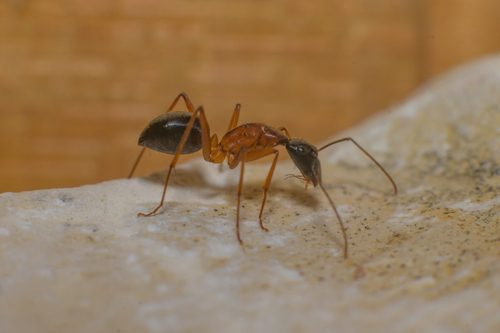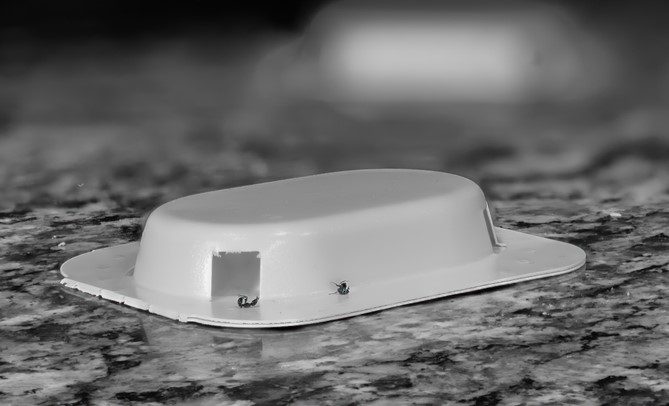Sugar ants may be tiny but can become a monumental annoyance when they invade your home. Ever wondered why these little critters seem to have a fondness for your space? Learning what attracts sugar ants is the first step to prevention.
We understand that families seek safe and effective ways to get rid of sugar ants. In this blog, we’ll offer some DIY ant prevention tips. Plus, we’ll highlight how a professional pest control company (like Gregory) can identify the source of your infestation and implement an effective control plan.
What are Sugar Ants?
Classification and Description
Sugar ant is the common name often given to a variety of small ant species that are attracted to sweets. Technically, the term “sugar ant” is most appropriately applied to the species Camponotus consobrinus, an ant native to Australia. However, in North America, “sugar ant” has become a colloquial term used to describe any small household ant that displays an affinity for sugary substances. This can include the following species:
- Odorous house ants
- Pharaoh ants
- Carpenter ants
- Little black ants
- Pavement ants
Contrary to what their name implies, sugar ants are not just attracted to sugary foods but also to proteins and fats. This is especially true in the fall when fats and proteins become more appealing. They are foragers, constantly on the hunt for food and water sources to support their colonies.
Physical Appearance

Sugar ants can vary in color, often ranging from black to brown, and occasionally orange and slightly red. They are small, with most being under 4mm in length, although the exact size can vary depending on the specific species. A defining characteristic of sugar ants is their antennae, which are bent like an elbow and give them a distinctive appearance. Their bodies, like other ants, are segmented into three main parts: the head, thorax and abdomen. They typically have a large head and a narrow waist. Some varieties have a shiny sheen to them.
Origins and Habitats
The ants we often label as “sugar ants” come from various habitats. Many are native to specific regions, while others have been introduced and become invasive. These ants tend to prefer warmer climates but have adapted to various conditions due to their close association with human environments. They can often be found nesting in soil, under logs or within the cracks and crevices of homes and buildings.
Common Ant Attractants: Why Do Sugar Ants Love Your Home?
Like all pests, ants are looking for food, water and shelter. Early on, you might only see a few ants but when those scouts find something they like, they leave scent trails to alert others to their discovery. It’s only a matter of time until a small ant problem blows up into a full infestation. Here are some of the main reasons for sugar ants in your house:
Food Residues and Spills
Honey, syrup, fruits or even a small sugary spill on the counter can quickly become an ant magnet. Wrappers and soft drink containers left out or in waste bins can be an enticing snack.
Pet Food
Because ants also love proteins and fats, they can find pet food highly attractive. Leaving pet food out, especially overnight, can invite a trail of ants.
Water Sources
Like all living beings, ants need water to survive. Leaky faucets, damp sponges, musty basements or even a water dish can be enough to attract their attention.
Grease and Protein Sources
These can range from crumbs under the microwave, residues in unwashed dishes or a splatter in the oven. Any food left out is fair game.
Common Hotspots in the Home
Sugar ants tend to congregate in certain areas based on the things they’re attracted to. To make sure you find all the ants in your home, check these hotspots:
Kitchen
This is sugar ant central due to the abundance of food. Pay special attention to areas around the sink, appliances, garbage bins and pantry.
Bathroom
The constant moisture and potential water residues make bathrooms a hotspot for sugar ants looking to hydrate.
Pet Areas
If you have a designated area for pet bowls, it’s a likely target, especially if water and food are left unattended.
Outdoor Areas Close to the Home
Fruit-bearing plants, compost heaps or even trash bins close to the house can be attractants. These may encourage ants to investigate your home further and find their way in.
7 Ways to prevent Sugar Ants

Understanding what draws sugar ants to your home is half the battle. Let’s look at seven ant prevention tips:
- Put food away when done eating and clean spills immediately.
- Store food in airtight containers.
- Regularly check for and fix water leaks.
- Keep pet areas clean and avoid leaving pet food out.
- Seal trash bins and compost areas and store them away from the home entrance.
- Identify and seal access points where pests can enter your home.
- Use natural deterrents like vinegar, peppermint, tea tree oil or bay leaves to keep ants out.
How to Get Rid of Sugar Ants
If you already have ants in your home, you have several options for eliminating them. If you have small children or pets, you’ll want to consider an approach that will ensure the health and safety of your family.

Baits and Traps
- Boric Acid Baits: Effective but toxic. Use with caution and keep out of reach from children.
- Sticky Traps: Place them in those ant hotspots we mentioned above.
- Vinegar and Sugar Traps: A mixture of both can trap ants effectively and be less dangerous to other members of your home.
Organic Pesticides
- Neem Oil: A natural pesticide and repellent.
- Insecticidal Soaps: Effective against ants and other pests when you clean your home with them. Washing away scent trails can reduce ant traffic.
- Plant-Based Sprays: Many organic sprays utilize plant compounds such as peppermint or lemon to deter ants.
Professional, Integrated Pest Management (IPM)
While DIY home remedies for sugar ants can be effective, professional intervention is often the most effective long-term solution to a pest problem. For best results, choose an non-invasive pest control service like Gregory. Our professionals combine both integrated and green methods and tailor their approach to your specific infestation. IPM focuses on long-term prevention through a combination of techniques while considering the ecology and environmental impact of each measure.
Pest Control for Sugar Ant Infestations
Getting rid of sugar ants may be trickier than you expect. A few scouts may not be a big deal but a continued presence may indicate a bigger issue. The nest behind your infestation may need to be eliminated. Contact Gregory today. We’ve been controlling pests in homes for over 50 years using the latest and safest methods available. One of our licensed technician will propose a sugar ant control program that locates the source and keeps ants out of your house for good.

